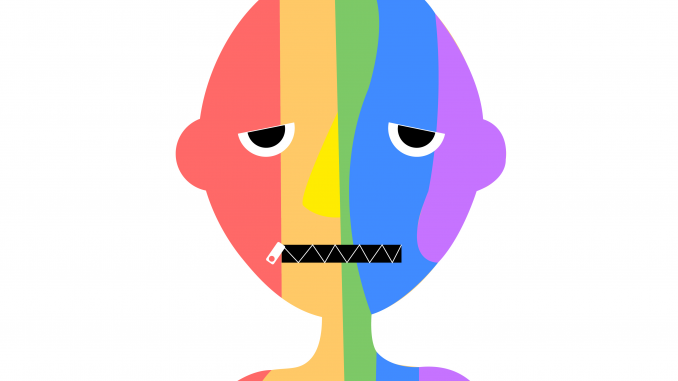

As a queer individual, I remember high school as more of an uncomfortable circus show than a place of learning.
Those years are defined by judgmental glares and awkward questions rather than making honor roll or academic awards that I won. It felt like my sexual orientation was the opening act of a four-year-long muffled laugh by every one of my peers.
Although I wasn’t harshly bullied in high school because of my sexuality, for the vast majority of queer youth the issue is much more serious.
More than 50 percent of queer students feel unsafe in school due to frequent bullying by their classmates, and of those students, 87.3 percent have experienced harassment due to their sexual orientation or gender identity, according to a 2017 report on school climate for queer individuals by the Gay, Lesbian and Straight Education Network.
With National Coming Out Day approaching on Oct. 11, and Temple’s National Coming Out Week this week, let’s consider how coming out as queer can be one of the most dangerous actions a student can make when they don’t feel safe in their own school.
Our schools need to develop stronger bullying policies in order to hold students and teachers accountable for their ignorant behavior.
Queer students who experience bullying are more likely to have their academic achievement suffer, affecting everything from poor attendance to worsened academic performance, the American Psychological Association reported in 2012.
LGBTQ students are three times more likely to drop out of high school than the national average, with bullying and harassment being cited as a main reason, the American Educational Research Association reported.
Although we tend to think of queerphobic bullying as being individual actions by students toward their peers, the issue doesn’t start and end just there.
Fifty-six percent of queer students have heard their teachers say homophobic remarks in school, and more than half of queer students experiencing discrimination don’t report it to staff due to ineffective bullying policies and ignorant teachers, a figure that has roughly remained the same since 2013, GLSEN reported.
“Because I identify as non-binary, I got made fun of a lot for that,” said Tori Ruth, a freshman psychology and classics major and a queer individual. “I remember one person used to call me ‘she’ or ‘it’ every time they either referred to me or spoke to me directly. Yet, when I blew up at him, I ended up at the principal’s office.”
Amy Hillier, an associate professor of social policy and practice at the University of Pennsylvania, recently partnered with the Attic, a youth center for LGBTQ youth, to develop and implement policies to protect the rights of queer students in schools.
For Hillier, this issue became much more significant and personal when her daughter came out as transgender a few years ago.
“I think there’s pushback to recognize that with nonbinary kids, those who use they/them pronouns, that that’s real, and that teachers need to gender them properly. So is that bullying, repeated misgendering? Well, yeah, it’s cruel,” Hillier said.
“With one of my favorite teachers, I asked her to use my pronouns, and she went on a whole lecture in front of the class about how my pronouns are grammatically incorrect and nobody should use them, and that made me really uncomfortable,” Ruth added.
When more than half of queer students don’t feel safe or welcome in school, and their teachers, administrators and legislators are only making that feeling worse, then it’s clear we’re facing an issue that requires an immediate solution with institutional change.
“Get your teachers professional development, “said Laurie McGuire, a K-5 teacher and the chair and policy coordinator for GLSEN Southern New Jersey. “Get your teachers training so that they can really address bullying when it happens.”
All members of the school community, students and staff alike, need to collaborate in creating an inclusive culture that does not tolerate queerphobia, and that can be done through heightened awareness of LGBTQ issues in classrooms and greater accountability for those bullying queer students.
Teachers can start making a difference by instituting sexuality and gender identity education into the classroom and by making a conscious effort not to misgender their students, Ruth said.
The classroom should be a place of learning, not victimization, and any different is an absolute failure on our part.



Be the first to comment